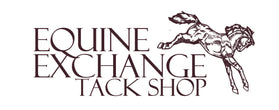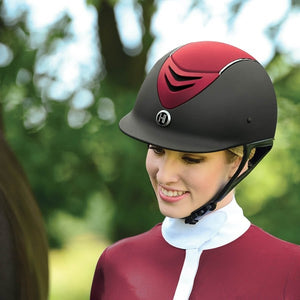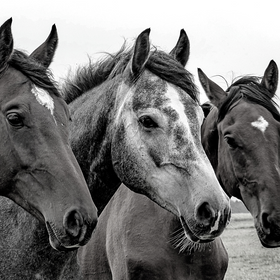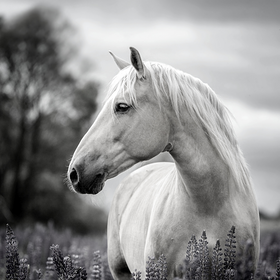Conquering Cross Country: The Heart-Pounding Middle Phase of Eventing
If you've ever dreamed of galloping across fields, leaping over imposing obstacles, and feeling like a heroic knight (or slightly unhinged daredevil) for a few glorious minutes, then cross country might just be your calling.
Cross country is the middle phase of eventing, tucked between the more civilized worlds of dressage (where you pretend your horse is a ballerina) and show jumping (where your horse becomes a nimble gazelle). It’s often the fan-favorite — and let’s be honest, the rider's too — because it’s fast, it's thrilling, and it's where the real grit shows.
What Is Cross Country?
In cross country, horse and rider tackle a long outdoor course filled with solid, natural-looking obstacles — all at speed. The objective? Cover the course safely, cleanly, and within an optimum time. It's not just a test of bravery (although a good bit of that is helpful); it’s a demonstration of your horse's endurance, power, and partnership with you.
Miss your line? Misjudge a takeoff? Forget your course? Let’s just say the ground comes up fast, and the penalty points pile up faster.
The Mighty Obstacles
Cross country jumps are solid and unmovable — meaning if you hit one, it’s not moving... you are. They're designed to mimic natural challenges a horse might encounter in the wild, but let's be honest: when was the last time you saw a ditch with flags in nature?
Here are the classic types you’ll encounter:
- Tables – Wide, sturdy, picnic-table-like jumps that dare you to fly.
- Ditches – Big holes in the ground. Horses must either leap over them or politely say, “No thank you,” and deposit you on the ground.
- Banks – Up and down steps that test your horse’s balance and your sticky seat.
- Water Complexes – Jump in, splash through, jump out. Bonus points for not swimming.
- Corners – Triangular jumps that test precision (and rider bladder control).
- Skinnies – Narrow jumps that seem to shrink as you approach. A true test of steering — and prayer.
- Brush Fences – Fences with brush tops that horses can brush through (theoretically).
- Trakehners – Logs suspended over ditches, created by someone who clearly wanted to separate the brave from the fainthearted.
How Is It Scored?
Cross country is scored by penalty points, and trust me, you want as few of these as possible. Penalties are given for refusing fences, jumping out jumps out of order, jumping fences in the wrong direction, going over the allocated time, or not jumping a jump in the course. Riders are immediately eliminated in the event of a fall, though riders are allowed to dismount at any time (if it is not in front of a jump or as a result of a refusal). An optimum time is set for the course and riders must complete the course within this time or receive a penalty
- Jumping Penalties:
- 20 penalties for a refusal, run-out, or circle.
- 40 penalties for a second refusal at the same obstacle.
- 65 penalties for a rider fall (mandatory retirement at higher levels).
- Elimination for three refusals at a single jump or on course.
- Time Penalties:
- Go too slow? You’ll rack up 0.4 penalties per second over the optimum time.
- At higher levels, some courses also punish you for being too fast — no speed demons allowed!
- Dangerous Riding Penalties:
- Yep, the judges are watching. Ride like a maniac and you might get whistled off the course.
Finish clean and on time? You’ll be the hero of the day, basking in the applause and probably finding a few burrs in your socks as a souvenir.
Best Breeds for Cross Country Glory
While almost any brave, athletic horse can attempt cross country, some breeds naturally rise to the occasion:
- Thoroughbreds – The gold standard. They have the heart, stamina, and gallop for those long tracks. Plus, they're wired to think fast (sometimes too fast).
- Irish Sport Horses – Built tough with a can-do attitude and usually a healthy respect for solid objects (which is a good thing).
- Warmblood Crosses – Particularly those with a dash of Thoroughbred. They bring scope, sensibility, and stamina.
- Anglo-Arabs – Small but mighty. Think of them as cross-country ninjas: agile, clever, and hardy.
- American-bred Appendix (Quarter Horse x Thoroughbred) – Quick, smart, and generally unflappable — a fantastic choice for riders who like a bit of cowboy swagger in their eventer.
At the end of the day, the best cross-country horse is brave, honest, smart enough to get themselves out of a sticky a situation, and forgiving enough to not hold a grudge when you completely botch a distance.
Final Thoughts
Cross country is an adrenaline rush wrapped in a strategic game of chess — played at 550 meters per minute. It tests your horse's heart, your own nerve, and the strength of your partnership. And when you come through those final flags, mud-spattered and grinning like a lunatic, you'll know why eventers say: “Cross country is why we ride.”
Now, grab your vest, double-check your stirrup leathers, and tell your horse he’s about to become a legend. (Or at least, you’re going to try.)






